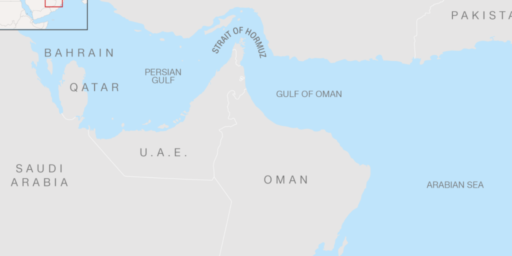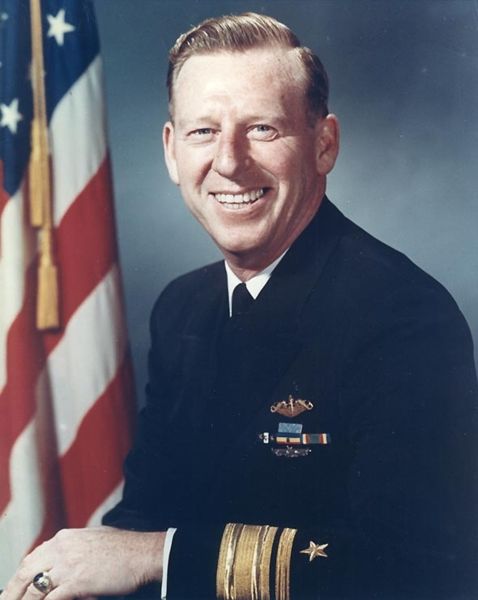U.S. Submarine, Japanese Ship Collide
The USS Newport News collided with a Japanese ship earlier today.
A U.S. nuclear submarine and Japanese merchant ship collided in the Arabian Sea late Monday, but there were no injuries on either vessel, the U.S. Navy and Japanese officials said.
There was no damage to the fast-attack USS Newport News submarine or the ship that affected either vessel’s ability to navigate, said a Navy official, who requested anonymity because the details of the incident had not yet been released. The official said the Navy was going to check for any other damage after daybreak Tuesday.
The cause of the collision, which occurred late Monday night local time, is still under investigation, the Navy official said.
The Japanese government received word of a crash from the U.S. side but was still investigating details, said Naoki Kumagai, deputy director of the U.S. security division at Japan’s Foreign Ministry.
You’d think the Arabian Sea (aka, the Persian Gulf) would be big enough that this sort of thing wouldn’t happen, especially in the age of radar, GPS, and so forth.
UPDATE (Richard Gardner): The submarine USS Newport News collided with a VLCC (Very Large Crude Carrier AKA Supertanker) bound for Singapore. The damage to the tanker did not cause any oil leaks from the tanker.
VLCCs are simply huge, with drafts (how much they go into the water) well over 50 ft, up to 100 ft, while most other major ships have drafts of 10 meters (33 ft) or less.
From the Fifth Fleet Press Release
No US sailors or merchant crew were injured when a US Navy submarine and a commercial cargo vessel collided in the Strait of Hormuz on Monday evening January 8, 2007.
The collision between USS Newport News (SSN 750) and the Japanese-flagged motor vessel Mogamigawa occurred at approximately 10:15 in the evening (local time) in the strait of Hormuz while the submarine was transiting submerged.
Overall damage to the USS Newport News is being evaluated. The propulsion plant was unaffected by this collision.
Various Submariner blogs immediately picked up that the submarine was submerged at the time, possibly coming up to periscope depth in acoustic conditions that are similar to driving in a blizzard. Or perhaps the submarine was operating in the shallow gulf, and managed to be struck by one of the few really big and deep-draft vessels that ply the gulf. Submarines often must operate on the big ocean, small ship concept hoping to avoid collisions. And sonar doesn’t work as well has Hollywood movies make out, particularly in the Gulf with a crazy thermocline (water temperature versus depth, changes in temperature deflect sonar).
The maritime rules of the road state that the submarine must avoid things above, even if it doesn’t know they are there, so the fault is on the submarine. And radar and the eyeball don’t work when the sub is submerged, which it usually is.
The reference to the propulsion plant above is to assure everyone that there isn’t a nuclear issue with the sub.
The Persian/Arabian Gulf is an unusual place, despite thousands of years of travel, during the first Gulf War, three US Frigates (FFGs) were steaming abreast (yes, no steam, I know) and the middle one hit an uncharted pinnacle.
No one was injured, there is no oil leak from the tanker (nor from the sub). Damage to the sub is unknown, but probably to the sail area. The investigation will take weeks, by which time this will have been overcome by other news.






Attack submarines are built for speed, maneuverability and stealth.
Oil tankers travel in known shipping lanes, ply the surface of the ocean, have deep draft that restricts their course and speed and have very “limited steerage”.
I am not laying blame… but I am sure wondering how this collision could possibly happen?
It is every US licensed captain’s responsibility to know where his vessel is and where every other vessel, obstacle and shoreline is for 20 miles in every direction.
Especially US Navy attack captains, skippering nuclear powered submarines.
Why has this collision disappeared from the news?
Captain Bill Sayles
USCG Master Merchant Marine Officer
Hawaii